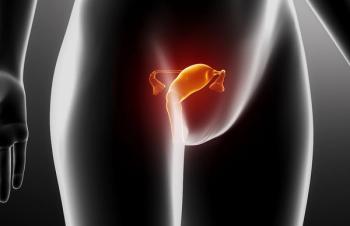
Oncology NEWS International
- Oncology NEWS International Vol 11 No 12
- Volume 11
- Issue 12
Data Supporting FDA Approval of Eloxatin Presented
NEW YORK-Patients with advanced colorectal cancer experienced a significantly better response rate with a combination of oxaliplatin (Eloxatin) and infusional fluorouracil (5-FU)/leucovorin (LV), compared with infusional 5-FU/LV or oxaliplatin alone, Mace Rothenberg, MD, of Vanderbilt University Medical Center, said at the Chemotherapy Foundation Symposium XX. The data, presented for the first time in the United States, were the basis for the recent FDA approval of oxaliplatin.
NEW YORKPatients with advanced colorectal cancer experienced a significantly better response rate with a combination of oxaliplatin (Eloxatin) and infusional fluorouracil (5-FU)/leucovorin (LV), compared with infusional 5-FU/LV or oxaliplatin alone, Mace Rothenberg, MD, of Vanderbilt University Medical Center, said at the Chemotherapy Foundation Symposium XX. The data, presented for the first time in the United States, were the basis for the recent FDA approval of oxaliplatin.
The multicenter, randomized, controlled clinical study was conducted at centers in the United States and Canada. The 469 participants included in this analysis had advanced colorectal cancer that had relapsed or progressed either while taking or within 6 months of treatment with bolus 5-FU/LV plus irinotecan (Camptosar). A total of 821 patients have been enrolled in this study, which is still ongoing.
Tumor response was assessed every three cycles (6 weeks). Confirmed objective tumor response was defined as a 30% or greater reduction in overall tumor size maintained for at least 4 weeks. In the oxaliplatin/5-FU/LV group, the objective tumor response rate was 9% (n = 152), compared with 0% and 1%, respectively, for the groups given infu-sional 5-FU/LV alone (n = 151) (P = .0002) and oxaliplatin alone (n = 156).
The median time to tumor progression with oxaliplatin/5-FU/LV was 4.6 months vs 2.7 and 1.6 months for infusional 5-FU/LV alone and oxaliplatin alone, respectively. At the time of the interim analysis, 49% of the radiographic progression events had occurred. Data on survival are not mature.
Articles in this issue
about 23 years ago
Stereotactic Radiosurgery Benefits Brain Met Patientsabout 23 years ago
Cancer Risk From Tainted Polio Vaccine Undetermined: IOM Reportabout 23 years ago
Tailored Messages Motivate Women to Get Mammogramsabout 23 years ago
Chemo/Rituximab Is Effective as First-Line CLL Therapyabout 23 years ago
Preoperative Capecitabine/RT Downstages Rectal Cancerabout 23 years ago
Intraoperative Lymphatic Mapping Enhances Cancer Stagingabout 23 years ago
Rituximab Ups Survival in Aggressive and Indolent NHLabout 23 years ago
Genzyme Molecular Oncology Begins Kidney Cancer Vaccine Trialabout 23 years ago
Lower Breast Cancer Survival in Hispanics: New Mexico StudyNewsletter
Stay up to date on recent advances in the multidisciplinary approach to cancer.
































































































